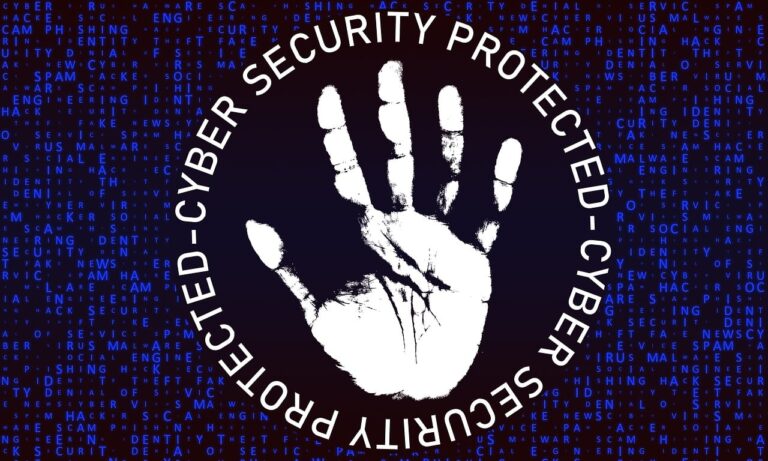What Are The Principles Of Zero Trust Architecture?
In the realm of cybersecurity, the concept of trust has evolved over the years. Gone are the days when a simple username and password would suffice to protect sensitive data. Enter zero trust architecture, a revolutionary approach that challenges the traditional notion of trust. With zero trust, every user and device is considered untrusted until proven otherwise, ensuring a robust and secure network. This article explores the fundamental principles of zero trust architecture, shedding light on how it can safeguard your organization’s valuable assets from ever-evolving threats. Zero Trust Architecture is a cybersecurity framework that challenges the traditional approach of trusting everything inside a network and emphasizes the verification of every user and device before granting access to resources. This approach helps organizations to strengthen their security posture and protect against advanced cyber threats. By implementing the principles of Zero Trust Architecture, businesses can create a robust and resilient security infrastructure. Let’s explore each principle in detail.
1. Never Trust, Always Verify
The first principle of Zero Trust Architecture is to never trust any user or device by default. Instead, organizations should always verify the identity and authorization of each user and device before allowing access to any resource. authentication and authorization processes should be implemented rigorously to ensure that only authorized individuals and trusted devices can gain access. By adopting this principle, organizations can minimize the risk of unauthorized access and protect sensitive data from potential attackers.
1.1 Every user and device must be authenticated and authorized before accessing any resource
Authentication and authorization play a pivotal role in Zero Trust Architecture. Every user and device, regardless of their location or network, must go through a robust authentication process to prove their identity. This ensures that only legitimate users and devices are granted access to the resources they need. Strong authentication mechanisms such as multi-factor authentication (MFA) should be employed to add an extra layer of security.
1.2 Continuously monitor and analyze user behavior and device health
In addition to authentication and authorization, organizations must continuously monitor and analyze user behavior and device health. By implementing behavior analytics and device health checks, organizations can identify any suspicious activities or anomalies that might indicate a potential security breach. Monitoring user behavior and device health in real-time helps to detect and respond to security incidents promptly, minimizing the impact of any potential threats.
1.3 Access control based on least privileged principle
Zero Trust Architecture advocates for access control based on the least privileged principle. Each user and device should only be granted the minimum level of access necessary to perform their specific tasks. By limiting access privileges and implementing granular access controls, organizations can minimize the potential damage caused by compromised user accounts or devices. This principle helps to reduce the attack surface and enhance overall security.
2. Secure Access to Resources
The second principle of Zero Trust Architecture focuses on securing access to resources by implementing strong identity and access management controls.
2.1 Implement strong identity and access management controls
To ensure secure access to resources, organizations should implement robust identity and access management (IAM) controls. IAM solutions help in centralizing the management of user identities, authentication, and authorization processes. By implementing an IAM system, organizations can ensure that only authorized individuals can access the resources they need. This principle helps in preventing unauthorized access and protecting sensitive data.
2.2 Utilize multi-factor authentication for all access requests
To enhance the security of access requests, organizations should utilize multi-factor authentication (MFA). MFA adds an additional layer of security by requiring users to provide multiple forms of authentication, such as a password, a fingerprint, or a one-time access code. This ensures that even if one factor is compromised, the attacker still needs to bypass additional layers of security to gain access. MFA significantly reduces the risk of unauthorized access and strengthens the overall security posture.
2.3 Use encryption for data at rest and in transit
Data encryption is an integral part of Zero Trust Architecture that ensures the confidentiality and integrity of data. Organizations should implement encryption mechanisms to protect data both at rest and in transit. Encryption transforms data into an unreadable format, making it inaccessible to unauthorized individuals even if the data is compromised. By using encryption, organizations can safeguard sensitive information from unauthorized access or interception during transit or storage.
3. Micro-segmentation and Network Segmentation
The principle of Micro-segmentation and network segmentation involves dividing the network into smaller segments to limit lateral movement and applying access controls between these segments.
3.1 Divide the network into smaller segments to limit lateral movement
Dividing the network into smaller segments helps in limiting the lateral movement of attackers. By segmenting the network, organizations can isolate different parts of their infrastructure, reducing the impact of a potential breach. This segmentation prevents attackers from freely moving across the network and accessing sensitive information. Each segment can be protected with its own set of access controls, making it more challenging for attackers to escalate their privileges.
3.2 Apply access controls between network segments
Once the network is divided into smaller segments, access controls should be applied between these segments to restrict the movement of users and devices. Access controls can include rules that dictate who can access specific segments and what actions they can perform. By implementing these access controls, organizations can ensure that only authorized individuals and trusted devices can communicate with the desired segments. This principle enhances network security and prevents unauthorized access.
3.3 Use virtual private networks (VPNs) for secure remote access
Virtual private networks (VPNs) play an essential role in Zero Trust Architecture, particularly for secure remote access. VPNs create an encrypted connection between a user’s device and the organization’s network, ensuring that data transmitted between them remains secure. By implementing VPNs, organizations can provide secure access to resources for remote users while maintaining the principles of Zero Trust Architecture. VPNs help to prevent unauthorized access and protect data in transit.
4. Continuous Monitoring and Threat Detection
Continuous monitoring and threat detection are crucial components of Zero Trust Architecture that help organizations identify and respond to potential security threats.
4.1 Implement real-time monitoring of all network traffic
Real-time monitoring of network traffic enables organizations to detect and respond to security incidents promptly. By analyzing incoming and outgoing network traffic, organizations can identify any suspicious activities or indicators of compromise. Real-time monitoring allows for the implementation of proactive security measures, such as blocking potential threats or isolating affected devices, reducing the risk of a successful attack.
4.2 Utilize threat intelligence feeds for proactive threat detection
Threat intelligence feeds provide organizations with the latest information on potential threats and vulnerabilities. By utilizing threat intelligence feeds, organizations can stay ahead of emerging threats and proactively protect their systems and data. Threat intelligence helps in understanding the tactics, techniques, and procedures used by attackers, enabling organizations to detect and mitigate potential threats more effectively.
4.3 Deploy behavior-based anomaly detection systems
Behavior-based anomaly detection systems analyze user behavior and network traffic patterns to identify deviations from normal behavior. By monitoring for anomalies, organizations can spot potential security breaches or malicious activities that evade traditional security measures. Behavior-based anomaly detection systems can identify suspicious behavior, such as unusual data transfers or multiple failed login attempts, triggering the appropriate response to minimize the impact of security incidents.
5. Adaptive and Risk-Based Trust Evaluation
The principle of adaptive and risk-based trust evaluation focuses on evaluating trust based on contextual information and employing risk-based access controls.
5.1 Evaluate trust based on contextual information
Contextual information, such as the user’s location, device type, and past behavior, should be considered when evaluating trust. Organizations can implement adaptive access controls that dynamically adjust based on the context of each access request. By evaluating trust based on contextual information, organizations can prevent unauthorized access attempts and respond appropriately to potential security threats.
5.2 Employ risk-based access controls
Risk-based access controls assess the level of risk associated with each access request and adjust the level of security accordingly. High-risk access requests may require additional authentication factors or stricter access controls. By employing risk-based access controls, organizations can effectively manage access to resources based on the level of risk associated with each request. This principle ensures that security measures are proportional to the identified risks.
5.3 Implement adaptive authentication mechanisms
Adaptive authentication mechanisms adjust the level of authentication required based on the risk associated with each login attempt. For example, if a login attempt originates from an unfamiliar location or an unrecognized device, the authentication mechanism may require additional verification steps before granting access. By implementing adaptive authentication mechanisms, organizations can enhance security without compromising user experience, reducing the risk of unauthorized access.
6. Data-Centric Security
Data-centric security focuses on protecting data with strong encryption and access controls, implementing data loss prevention measures, and monitoring data flows to enforce data integrity.
6.1 Protect data with strong encryption and access controls
To ensure the confidentiality and integrity of data, organizations should protect it with strong encryption and access controls. Encryption transforms data into an unreadable format, making it inaccessible to unauthorized individuals. Access controls limit who can access the data and what actions they can perform. By implementing both encryption and access controls, organizations can protect sensitive data from unauthorized access or tampering.
6.2 Implement data loss prevention (DLP) measures
Data loss prevention (DLP) measures help organizations prevent the accidental or intentional leakage of sensitive data. DLP solutions can identify and monitor data in motion, at rest, and in use to prevent unauthorized sharing, copying, or exfiltration of data. By implementing DLP measures, organizations can proactively protect sensitive data and ensure compliance with data protection regulations.
6.3 Monitor data flows and enforce data integrity
To maintain the integrity of data, organizations should monitor data flows within their network. By monitoring data flows, organizations can detect any attempts to modify or manipulate data in transit. Data integrity mechanisms, such as checksums or digital signatures, can be implemented to verify the integrity of data and detect any unauthorized modifications. This principle ensures that data remains intact and unaltered throughout its lifecycle.
7. Least Privilege Access
The principle of least privilege access focuses on granting users and devices only the privileges they need and implementing fine-grained access controls.
7.1 Grant users and devices only the privileges they need
To minimize the potential damage caused by compromised user accounts or devices, organizations should grant users and devices only the privileges they need to perform their specific tasks. Granting excessive privileges increases the attack surface and the potential impact of a security breach. By following the principle of least privilege, organizations can reduce the risk of unauthorized access and limit the potential damage caused by insider threats or compromised accounts.
7.2 Implement fine-grained access controls
Fine-grained access controls allow organizations to define detailed permissions for specific resources. By implementing granular access controls, organizations can restrict access to sensitive data, critical systems, or high-risk assets. Fine-grained access controls ensure that each user or device can only access and perform actions authorized for their specific role or function. This principle enhances security by preventing unauthorized access and mitigating the impact of potential security breaches.
7.3 Regularly review and update access privileges
Access privileges should be regularly reviewed and updated to align with changing business requirements and ensure the principle of least privilege. As employees change roles or responsibilities, their access privileges should be adjusted accordingly. Regularly reviewing and updating access privileges helps organizations maintain a secure environment and prevent unauthorized access. This principle ensures that access permissions are never granted indefinitely and are always aligned with the principle of least privilege.
8. Secure Network Perimeters
The principle of secure network perimeters focuses on establishing strong perimeter defenses and regularly patching and updating network devices.
8.1 Establish strong perimeter defenses
Organizations should establish strong perimeter defenses to protect their internal network from external threats. Firewalls, intrusion detection systems (IDS), and intrusion prevention systems (IPS) play a crucial role in establishing a secure network perimeter. Firewalls monitor and control incoming and outgoing traffic, while IDS and IPS detect and respond to potential security incidents. By implementing strong perimeter defenses, organizations can prevent unauthorized access and protect internal resources.
8.2 Utilize firewalls and intrusion detection/prevention systems
Firewalls and intrusion detection/prevention systems are essential components of securing network perimeters. Firewalls act as a barrier between the internal network and external threats, allowing only authorized traffic to pass through. Intrusion detection systems monitor network traffic for signs of potential security breaches, while intrusion prevention systems actively block or mitigate such threats. By utilizing firewalls and IDS/IPS, organizations can enhance network security and protect against external threats.
8.3 Regularly patch and update network devices
Regularly patching and updating network devices is crucial for maintaining a secure network perimeter. Network devices, including routers, switches, and firewalls, should be updated with the latest security patches and firmware releases. These updates address known vulnerabilities and improve the overall security posture of the network. By regularly patching and updating network devices, organizations can prevent exploitation of known vulnerabilities and ensure the effectiveness of their perimeter defenses.
10. User-Friendly Experience
The principle of user-friendly experience focuses on balancing security with user experience and implementing mechanisms such as single sign-on (SSO) and simplified user access requests and approvals.
10.1 Balance security with user experience
While maintaining strong security measures is essential, organizations should also prioritize a user-friendly experience. Overly complex or burdensome security measures may negatively impact user productivity and satisfaction. Striking a balance between security and user experience is critical for successful adoption and acceptance of security policies. Organizations should strive to implement security measures that do not impede user workflows unnecessarily.
10.2 Implement single sign-on (SSO) and seamless authentication mechanisms
To enhance user experience, organizations can implement single sign-on (SSO) and seamless authentication mechanisms. SSO allows users to authenticate once and access multiple applications or resources without the need to re-enter their credentials. Seamless authentication mechanisms, such as biometric authentication or passwordless authentication, eliminate the need for users to remember and enter complex passwords. By implementing these mechanisms, organizations can simplify the authentication process and improve user satisfaction.
10.3 Simplify user access requests and approvals
Simplifying user access requests and approvals reduces the burden on both users and administrators. Implementing self-service portals and automated workflows streamlines the access request and approval process. Users can request access to resources directly through the portal, and administrators can evaluate and approve requests efficiently. By simplifying user access requests and approvals, organizations can reduce the time and effort required to grant access while maintaining security and compliance.
In conclusion, Zero Trust Architecture is a comprehensive cybersecurity framework that promotes a proactive and layered approach to security. By implementing its principles, organizations can enhance their security posture, protect against advanced cyber threats, and ensure the confidentiality, integrity, and availability of their critical resources and data. Whether it’s securing access to resources, implementing network segmentation, or prioritizing user experience, each principle plays a vital role in building a robust and effective security infrastructure in the evolving digital landscape. With Zero Trust Architecture, organizations can navigate the complexities of modern cybersecurity and stay resilient against ever-evolving threats.








